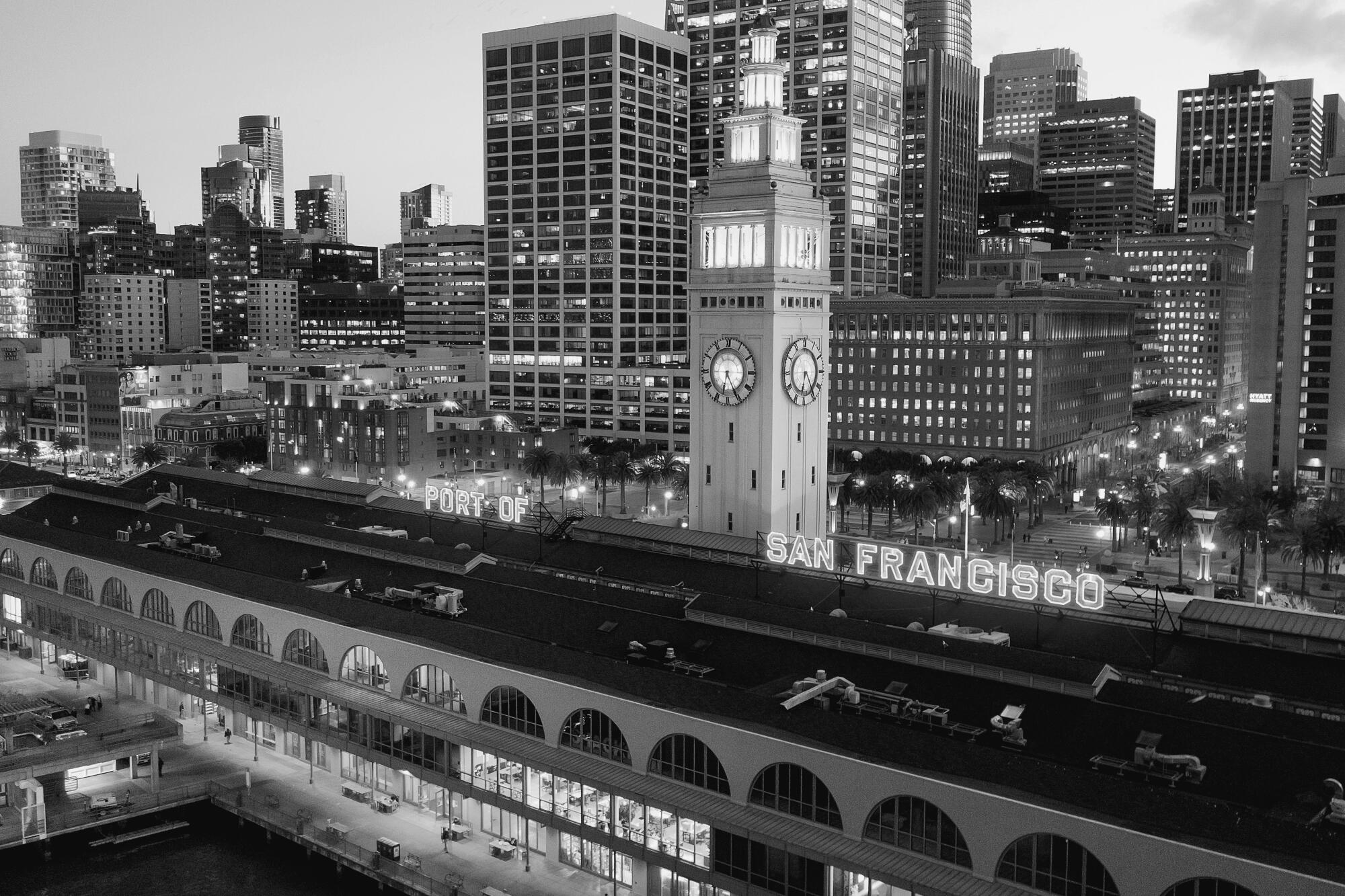
- Share via
Review
Portal: San Francisco's Ferry Building and the Reinvention of American Cities
By John King
W.W. Norton: 320 pages, $30
If you buy books linked on our site, The Times may earn a commission from Bookshop.org, whose fees support independent bookstores.
San Francisco’s Ferry Building and Los Angeles’ City Hall might be long-lost cousins. Both are iconic towers with recognizable silhouettes. Each was once its city’s most famous structure, and each has witnessed changes to that cityscape that would be unimaginable to its original builders.
“Every city has a landmark like this, a building through which one can read the larger history,” John King writes in the introduction to his new book “Portal: San Francisco’s Ferry Building and the Reinvention of American Cities.” True enough. But as King goes on to show, the Ferry Building, with its sweeping unobstructed views of the San Francisco Bay, has had a unique vantage on American urban history.
Vegas is known for its Egyptian pyramids, dancing fountains, fake Rome. A spherical building broadcasting eyeballs takes the surreal up a notch.
The Ferry Building has been a participant and spectator in a series of eras that shaped every American city: the industrial age of working waterfronts and railroads; the destructive period of freeway development and heedless urban renewal; and the “urban renaissance” of foodie culture and gentrification. Now, it must face the “doom loop” of big-city downtowns and looming threats of climate change. In telling this story, King, the urban design critic for the San Francisco Chronicle, subtly makes the case for a return to the kind of visionary urban planning that made this architectural gem possible in the first place.
The Ferry Building was conceived at the end of the 19th century as San Francisco’s equivalent to a grand train station, connecting visitors by water to rail lines terminating in the East Bay, King explains. Unsurprisingly, a faction of San Franciscans opposed the project on the grounds that it would further entrench the power of the reviled railroad syndicates. More forward-thinking minds prevailed, and the A. Page Brown-designed depot opened its doors in 1898. This early “civic temple,” intended to awe visitors and signify the city’s prosperity, prefigured rail hubs like New York’s Grand Central Terminal and Los Angeles’ Union Station.

At the outset of the 1930s, nearly 50 million passengers crossed the Ferry Building’s threshold annually, making it the second busiest transit station in the world. But the opening of San Francisco’s two iconic bridges at the end of the decade reduced the building’s utility and its gravitas. “The Bay Bridge supplanted the Ferry Building functionally,” King writes. “Then the Golden Gate Bridge replaced it symbolically.”
The urban planning principles that created this great passenger clearinghouse were changing as well. In the postwar era, planners believed “wartime strategies could be applied to domestic revival,” King writes. Acres of dense neighborhoods, usually occupied by poor people of color, were leveled to clear the way for monolithic developments and freeways. San Francisco was no exception: In 1959, the Ferry Building was cast into twilight by the double-decker Embarcadero Freeway.
San Francisco recently did something it hasn’t done in a century: flipped the switch on giant lights blazing the year “1915” on the tower of its landmark Ferry Building.
But by the time the freeway opened, San Francisco had already realized its mistake. There was no ribbon-cutting ceremony for the monstrous road, which debuted just a month after the city rejected seven of 10 planned freeways throughout the city.
While conceding that “San Franciscans are nothing if not self-important,” King notes that the city’s freeway revolt really did have a nationwide impact. Communities around the country suddenly began saying “no” to freeways, though the ones that successfully fended them off were typically wealthy areas like Laurel Canyon, while freeways proceeded in working-class areas such as East L.A.
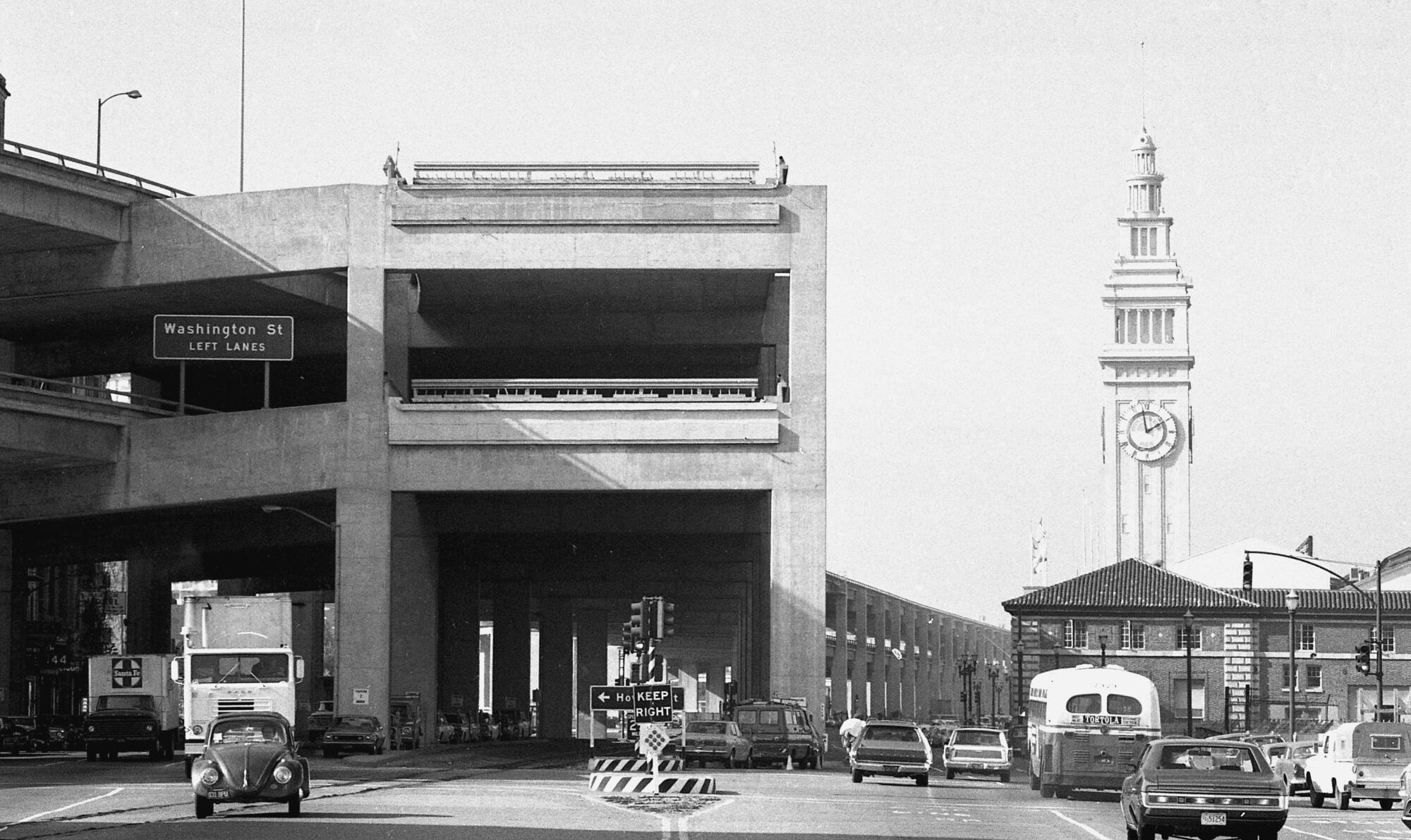
San Francisco remained on the cutting edge of freeway opposition. By the 1980s, powerful leaders including then-Mayor Dianne Feinstein began agitating for the Embarcadero Freeway’s removal. However, a 1986 voter referendum was foiled by populist progressives who expressed a “blinkered resistance to anything that might perhaps be harmful,” King writes. Just three years later, the Loma Prieta earthquake damaged the highway and helped settle the matter. It was demolished in 1991 and eventually replaced with the Embarcadero boulevard and streetcar.
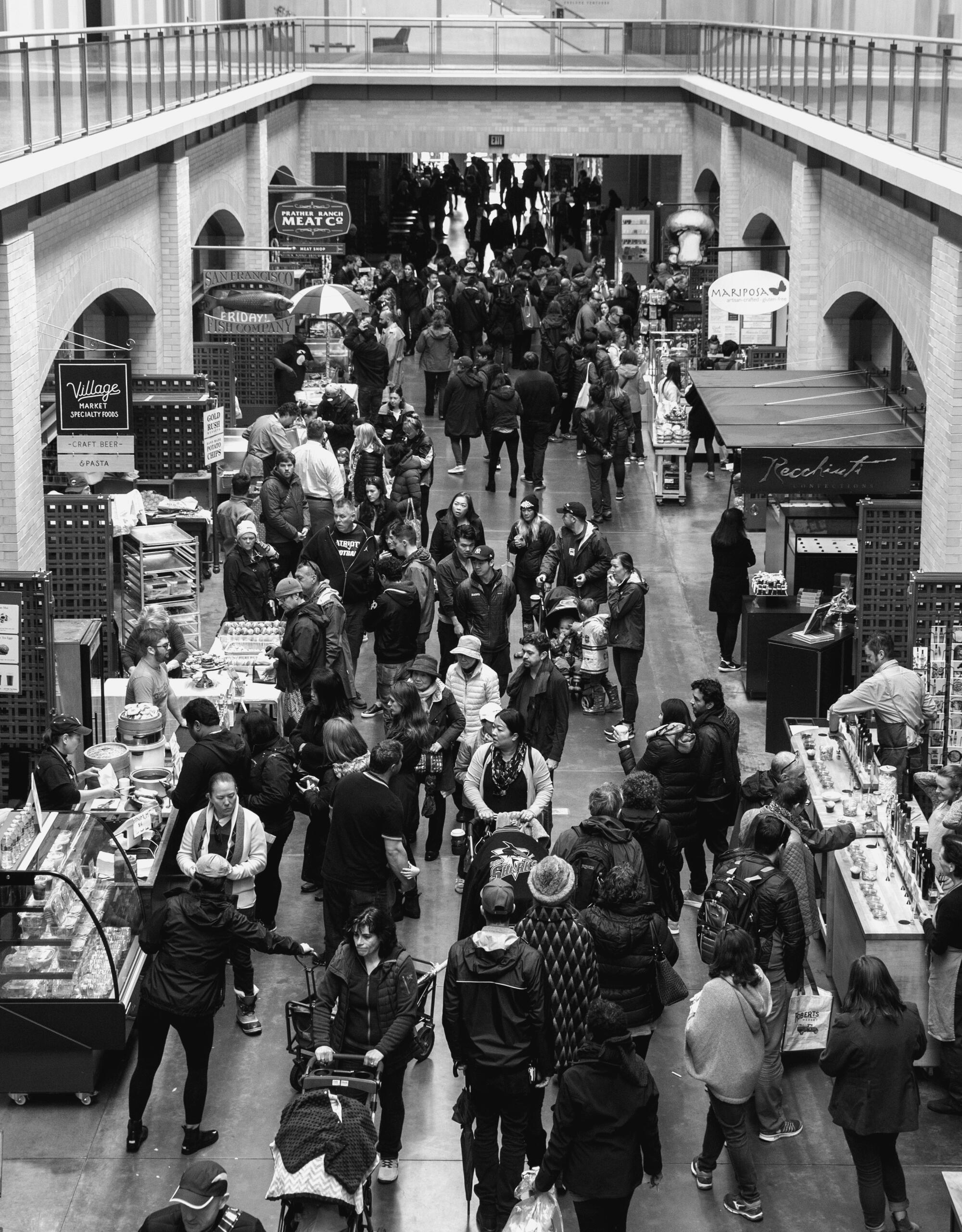
This freeway removal project, widely viewed as the most successful in the U.S., was complemented by the renovation of the Ferry Building itself. Drawing inspiration from the arcades of Paris, the market that opened inside in 2003 encouraged vendors to spill out into the central corridor, providing a multisensory shopping experience. It would serve as a catalyst for the urban food hall boom that has since spread across the country.
The gourmet products on sale, which today include (per King) a $10 jar of meatballs for dogs, have been pilloried for embodying a quintessentially Californian foodie snobbishness. Yet even Anthony Bourdain, who visited the Ferry Building in 2009 fully expecting to hate it, ultimately concluded, “It’s hard for me to be against this.”
San Franciscos urban problems are a challenge; they are also an opportunity. Plus, Tchaikovsky orgasms and a 23-year-old apology, in our weekly arts newsletter
As downtown San Francisco, like downtowns across the nation, continues to struggle economically in the wake of the COVID pandemic, the Ferry Building remains a beacon of hope, King writes, representing the kind of live-work-play urban future many planners dream of. But that future is also under threat from climate change. The bay‘s water level could rise as much as seven feet by the end of the century, necessitating a Herculean engineering job to save the building and the rest of San Francisco’s waterfront.
Other coastal areas, from Boston to the beach towns of Southern California, are facing a similar reckoning. King finds that these coastal adaptation projects are, by their nature, very expensive and controversial. And yet, something needs to be done.
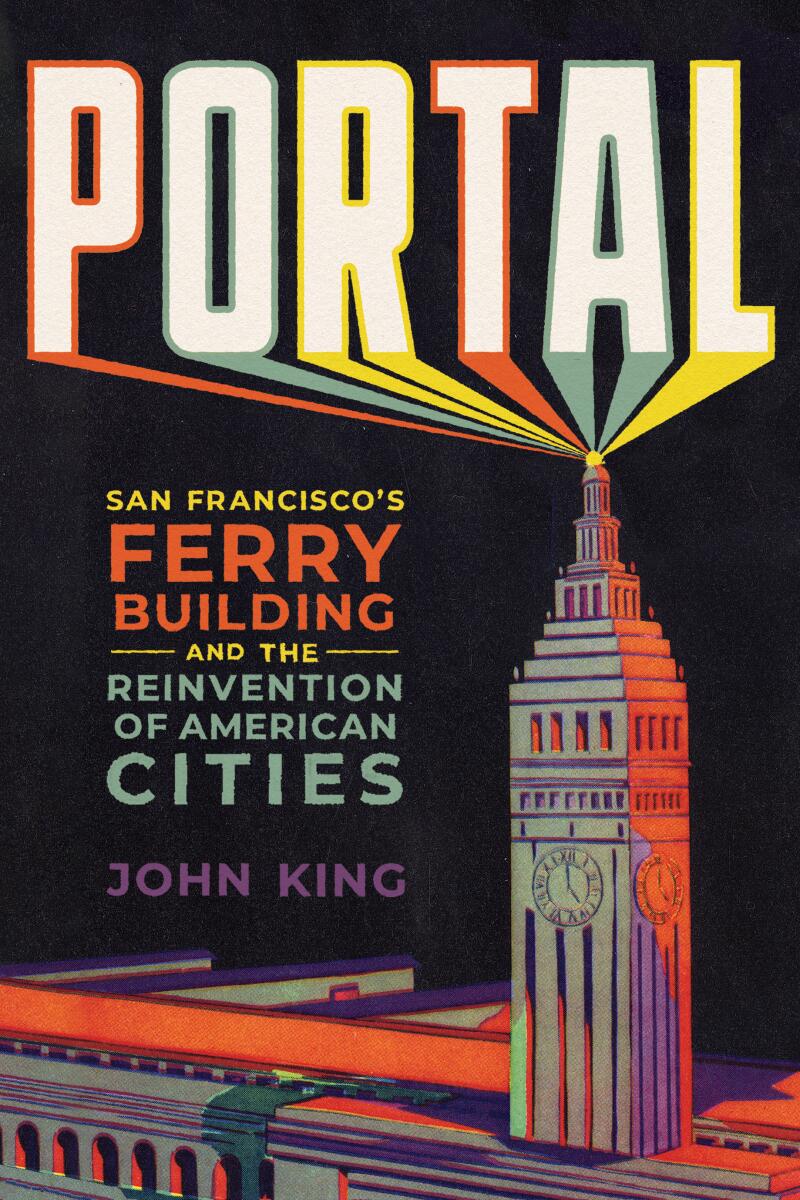
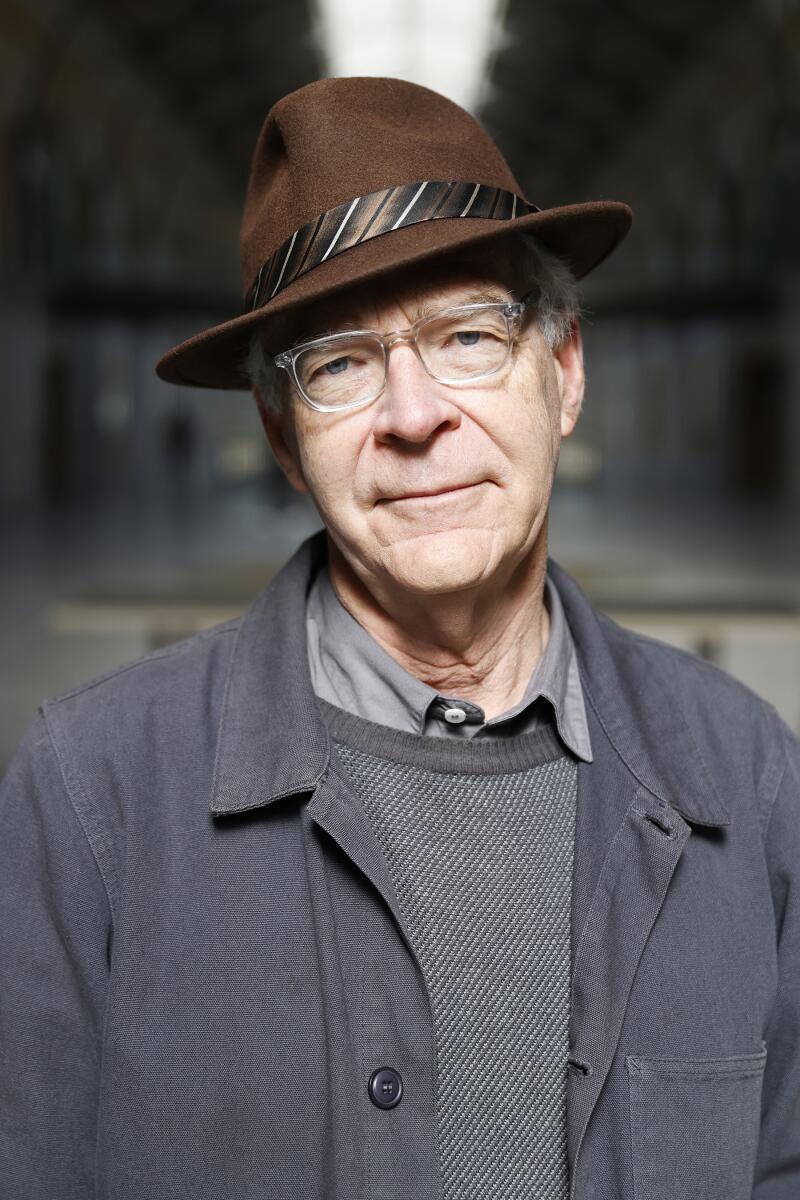
John King’s “Portal” folds the history of urban progress into the story of San Francisco’s Ferry Building. (Jessica Christian / The San Francisco Chronicle)
This is, unfortunately, where King’s book concludes. Perhaps the only major flaw in this otherwise riveting history is that it doesn’t more forcefully articulate the nature of our present urban moment.
The pandemic and climate change put us solidly in a new era of American urbanism, one that demands big plans to solve big problems. Whether in adapting to rising seas, reimagining downtowns, creating a green mass transportation network or addressing the housing shortage, visionary thinking is desperately needed in cities across the country. The story of San Francisco’s Ferry Building serves as a valuable reminder that transformative urban change is not just possible but inevitable. The only question is what form it will take, and whether we will celebrate it or live to regret it.
Schneider is a freelance journalist working on a book about urban planning in America.
More to Read
Sign up for our Book Club newsletter
Get the latest news, events and more from the Los Angeles Times Book Club, and help us get L.A. reading and talking.
You may occasionally receive promotional content from the Los Angeles Times.









